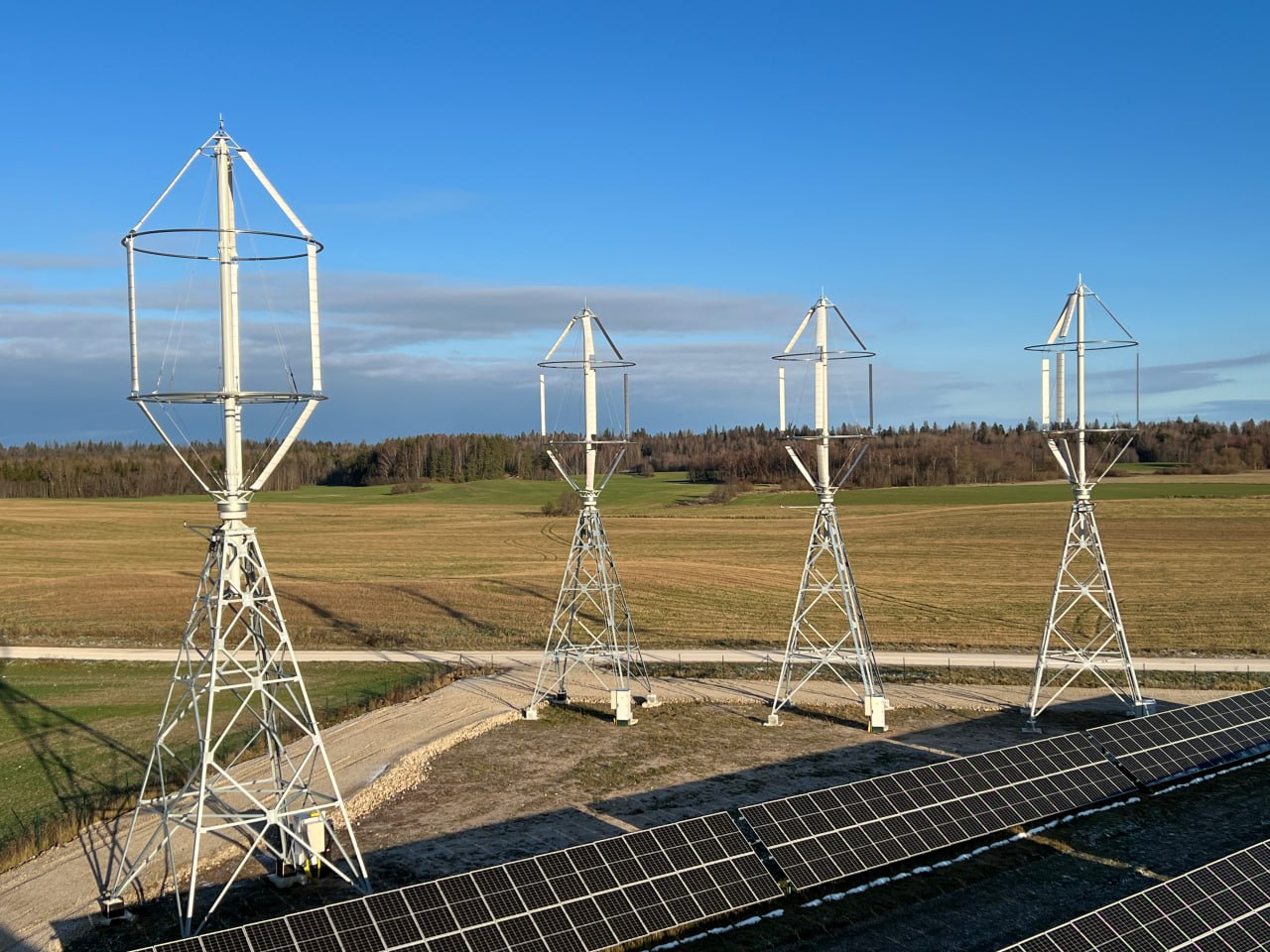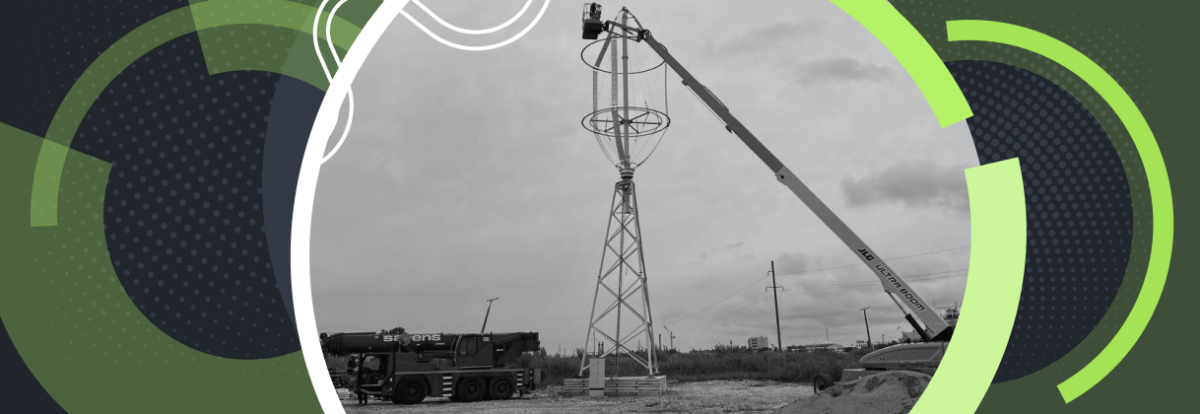Introduction
In the era of global environmental challenges and active exploration of pathways to sustainable development, wind energy comes to the forefront as one of the most promising directions in the field of renewable energy. Small wind energy, in particular, holds great promise for seamless integration into diverse ecosystems without causing substantial harm to the environment. Small wind turbines can be installed in diverse locations, ranging from remote rural regions to densely populated urban areas, providing access to clean energy in locations that were once deemed inaccessible.
Contributing to the UN Sustainable Development Goals is no longer only a matter of moral duty but also an economic imperative for many companies. Small wind energy plays a key role in this context. It not only aids in cutting down on greenhouse gas emissions and lessening reliance on fossil fuels, but also offers sustainable solutions that foster social and economic progress within local communities.
FREEN stands out among other market participants with its approach to developing and implementing small wind turbines, focusing on maximum efficiency and minimal environmental impact. Through its innovative projects and strategies, FREEN demonstrates how business interests can align with achieving global environmental goals, actively promoting ideas of sustainability and environmental responsibility.
This introduction lays the groundwork for a more in-depth exploration, delving into the nuances of small wind energy, its role in advancing sustainable development objectives, and showcasing tangible instances of FREEN’s initiatives in this field.
Small wind energy and UN Sustainable Development Goals
Small wind energy plays a significant role in achieving the United Nations Sustainable Development Goals (SDGs). These goals are aimed at addressing global issues such as poverty, inequality, climate change, ecosystem sustainability, and energy accessibility. Here are a few key goals to which small wind energy can contribute:
Goal 7: Access to affordable and clean energy
Small wind turbines offer access to reliable, sustainable, and renewable energy sources, particularly in remote or underdeveloped areas. They help reduce dependence on fossil fuels, alleviate energy poverty, and enhance quality of life by improving energy infrastructure.
Goal 13: Take action to combat climate change
Wind energy reduces carbon dioxide and other greenhouse gas emissions, which is a key factor in combating global warming. Harnessing wind as an energy source helps to decrease the overall carbon footprint and contributes to adaptation and mitigation of the consequences of climate change.
Goal 12: Ensure sustainable consumption and production patterns
Small wind turbines can be manufactured and operated with minimal environmental impact, supporting a circular economy and reducing waste at all stages of the product lifecycle. This includes the use of materials that can be fully recycled or effectively repurposed for other uses after the end of the turbines’ operational lifespan.
Goal 15: Protect, restore and promote sustainable use of ecosystems
Small wind turbines that are installed with minimal impact on natural habitats, help preserve biodiversity. They occupy a tiny fraction of land, seamlessly integrating with existing land uses like farming, while preserving ecosystem integrity.
FREEN’s role
FREEN actively employes strategies that directly contribute to the achievement of these Sustainable Development Goals. The adoption of such innovative technologies as development of more efficient and quieter turbines allows the company to contribute to environmental safety and improve the quality of life for local populations. FREEN also makes concerted efforts to expand the application of wind turbines in agriculture, thereby fostering both energy independence and economic sustainability of farms. These initiatives not only diminish environmental footprints but also bolster local community incomes by offering them avenues for growth and enhancement of their living standards
The company also actively participates in international and regional initiatives advocating for sustainable technologies, endorsing policies centered on sustainable development and environmental stewardship. This underscores FREEN’s dedication not only to commercial success, but also to social responsibility and environmental well-being.
Technological innovations and economic efficiency
Technological innovations in small wind energy
Cutting-edge technological advancements in small wind energy play a pivotal role in enhancing its efficiency and accessibility. FREEN is at the forefront, actively integrating innovative designs and materials to boost wind turbines performance while minimizing their environmental footprint.
Improving blade materials and design
The use of such advanced materials, as carbon fibers and glass fiber composites, makes wind turbines lighter and stronger. It both extends their lifespan and improves their efficiency by reducing rotor inertia. In addition, innovative blade airfoils modeled after natural shapes, such as bird wings, significantly reduce noise levels and increase the coefficient of performance.
Control and monitoring systems
The adoption of smart control and monitoring systems allows for optimizing the operation of wind turbines in real time. Using state-of-the-art information technologies, FREEN maintains precise control over device operations, preventing disruptions and reducing equipment wear. This increases the overall reliability of the systems and cuts maintenance costs.
Economic efficiency of small wind energy
The economic appeal of small wind energy is gaining momentum, driven by decreasing production and installation costs, as well as the availability of government incentives and subsidies.
Reduction in production costs
Advancements in manufacturing technology and increased production scale are lowering the overall costs of wind turbines. This is expanding access to affordable wind energy for a wider range of consumers, including small private farms and small-scale businesses that were previously unable to afford it
Government incentives and subsidies
Many countries offer tax incentives, subsidies, and other forms of support to foster the use of small wind energy. These initiatives greatly enhance the economic appeal of wind power, rendering investments in wind turbines more lucrative and expediting the returns on projects.
Option to sell excess energy
The option for consumers to sell excess generated energy back to the grid not only bolsters grid stability but also amplifies the economic advantages of the use of wind turbines This not only helps cut down on electricity bills, but can also serve as an additional source of income.
Stability and long-term benefits
The use of small wind energy also contributes to increasing energy independence and stability, reducing reliance on fluctuations in fossil fuel prices, while improving energy security at the local level. In the long term, it both minimizes the economic risks related to external economic factors and fortifies society’s resilience to energy crises.
FREEN puts these technological and economic strategies into action to guarantee environmental and economic stability for its customers. By making strategic investments in innovation, the company bolsters its market standing and drives the widespread adoption of sustainable and cost-effective energy solutions. As a result, FREEN emerges as a trailblazer in the sustainable energy sector, not just keeping pace with global trends but actively shaping their evolution.
Conclusion
Small wind energy is a powerful tool for achieving sustainable development. It contributes to environmental security and energy independence while playing a crucial role in implementing such global initiatives, as the UN’s Sustainable Development Goals. The use of small wind turbines helps ensure access to clean and affordable energy, combat climate change, promote sustainable consumption and production practices, and protect life on land.
FREEN holds leading positions in the small wind energy market, showcasing how technological innovations and strategic vision can synergize to drive sustainable development. Investments in cutting-edge materials and management methods, project economic efficiency, along with government incentives and subsidies, render small wind energy not only environmentally but also economically lucrative.
The example of FREEN demonstrates how a company can contribute to global efforts towards sustainable development by championing the use of renewable energy and offering solutions that enable people to improve their livelihoods while preserving the environment. This underscores the vital role small wind energy plays in modern sustainable energy frameworks and showcases the role each of us can play in creating a greener and more sustainable future.
Unlocking the full potential of small wind energy and driving its widespread adoption paves the way for a more sustainable future, and FREEN is honored to be a pioneer in this transformative journey. As we look to the horizon, we are met with exciting challenges and opportunities, and we are committed to pushing the boundaries of innovation to deliver clean, reliable, and inclusive energy solutions that benefit everyone.






